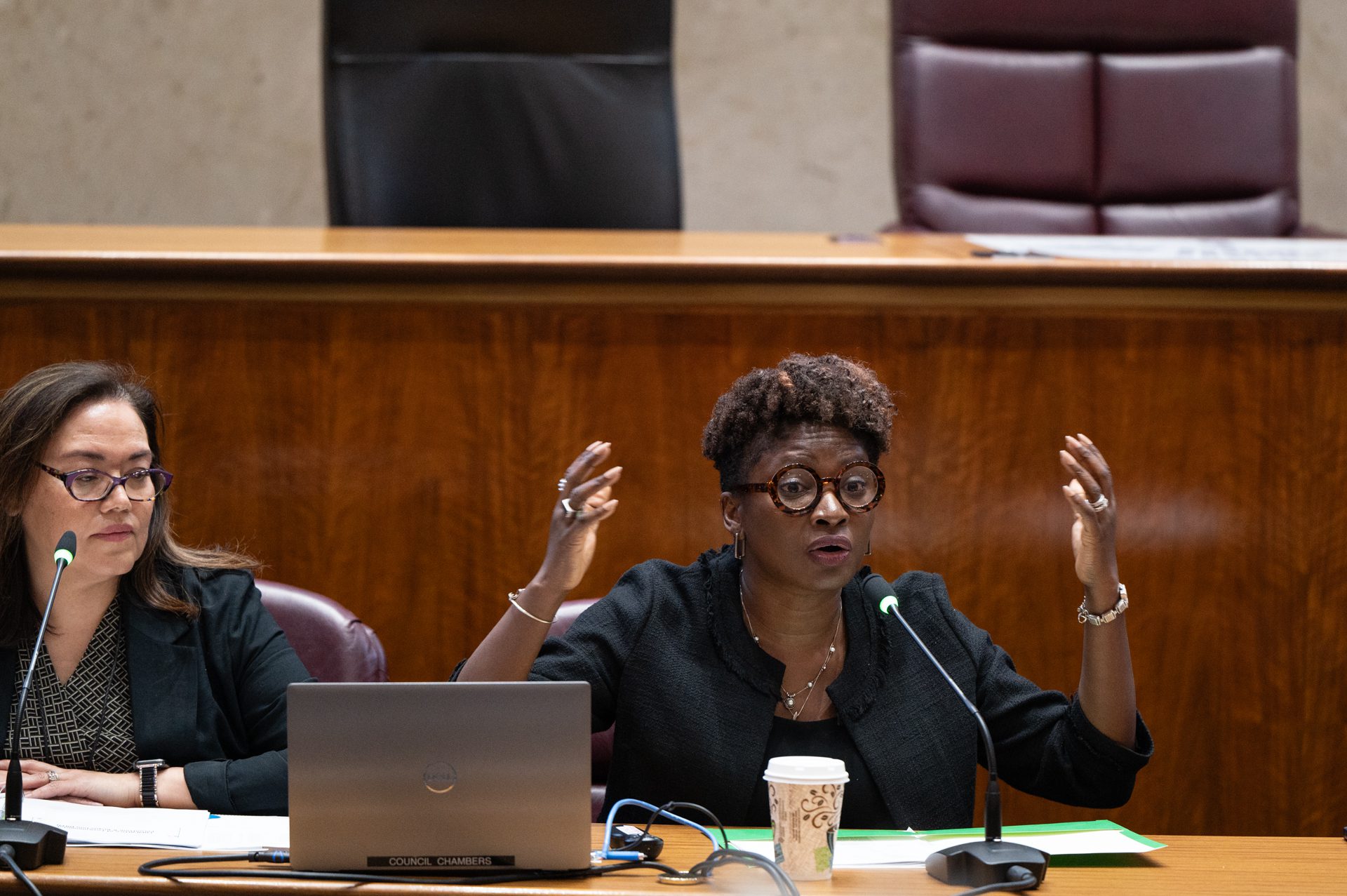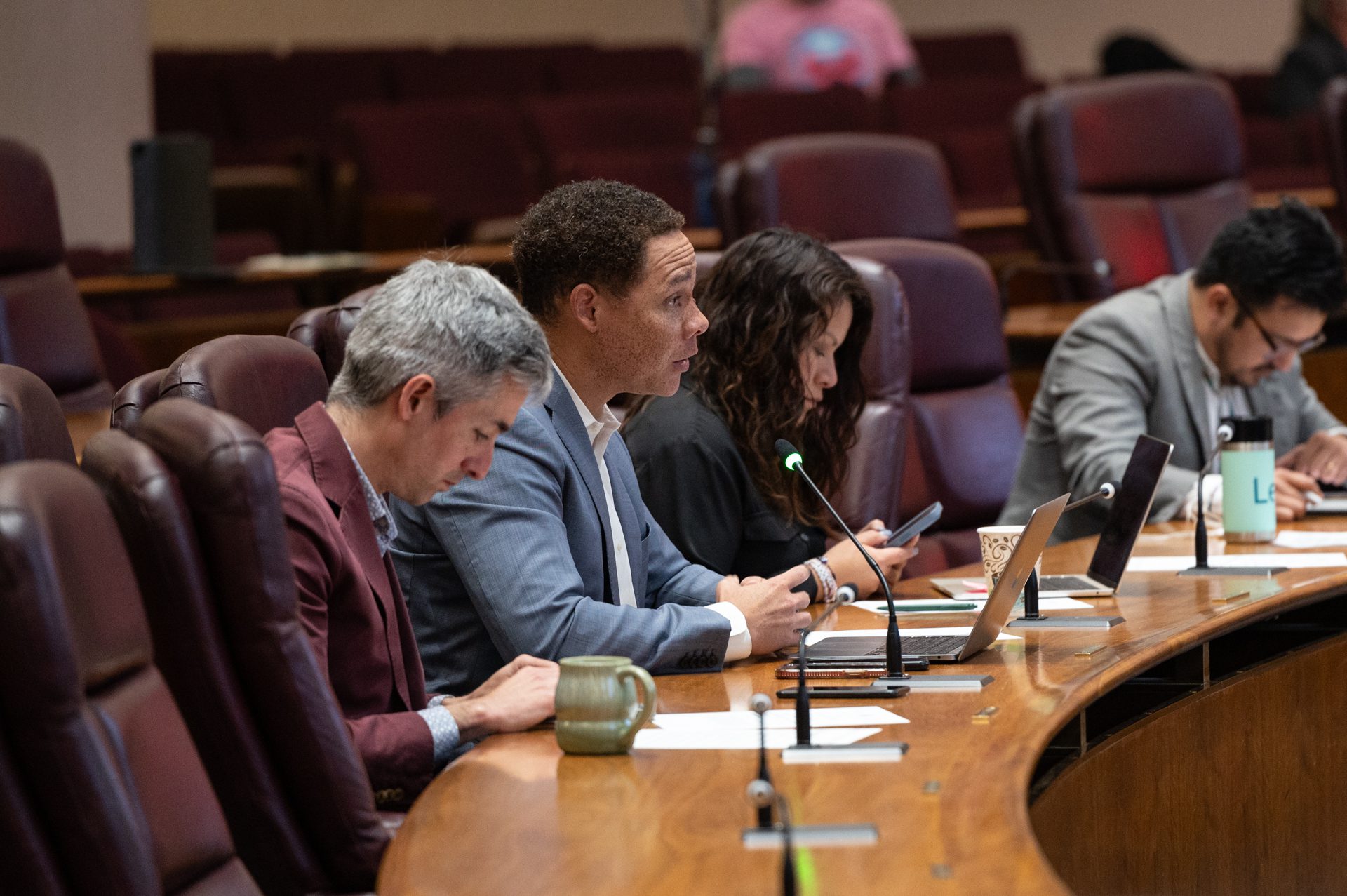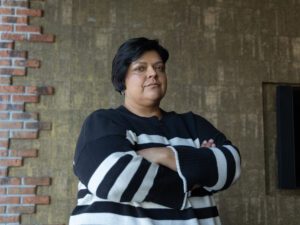 Max Herman/Borderless Magazine
Max Herman/Borderless MagazineCommissioner Dr. Olusimbo Ige said the department faced hurdles in its environmental efforts, including limited capacity to carry out more inspections at a hearing before the City Council Committee on Environmental Protections and Energy.
Chicago Department of Public Health (CDPH) officials said the agency is facing capacity issues to carry out more inspections during a Wednesday hearing before the City Council’s Committee on Environmental Protection and Energy.
The meeting came as environmental groups sought answers regarding the department’s plans to install approximately 230 air pollution sensors, the department’s capacity and its commitment to collaborate with environmental community groups in heavily polluted areas.
CDPH Commissioner Dr. Olusimbo Ige told committee members the department only had three air inspectors and was looking to fill three air inspector vacancies. CDPH is the city’s main environmental regulator, granting operating permits, conducting inspections, and issuing citations for environmental ordinance violations.
News that puts power under the spotlight and communities at the center.
Sign up for our free newsletter and get updates twice a week.
CDPH Deputy Commissioner Maribel Chavez-Torres said the department conducted 393 routine air inspections and over 4,500 air inspections in response to complaints, which are required to conduct within a day of the complaint being submitted.
Ige said most inspections happened in high-income areas of the city because most of the complaints they received were from those areas.
Committee members Ald. Julia Ramirez (12th) and Ald. Matthew Martin (47th) asked CDPH to explain its citation processes, questioning why it does not ticket and fine facilities for ongoing violations until an existing violation is settled.
Under city law, the department cannot cite or fine the same company or source multiple times for the same violation when a citation is already in a hearing process, Ige said.
Martin said the citation process could incentivize companies to put off remediating their air pollution issues, “continuing to put these harmful chemicals in the air when they know what the solutions are.”

In response to questions about lead service line replacement issues, Ige said the department is aware of the areas disproportionately impacted but that the city depends on federal funding. Ige said she is “nervous” about potential cuts to federal funds used to address such issues. The city receives about $600 million from the federal government, she said.
“We have always had that data, but having data is not sufficient without the resources to solve the problem,” said Ige. “So these are the real realities of the limited resources we have at the city, and we need the federal government.”
Read More of Our Coverage
During the hearing, the department also announced a timeline for a stalled air monitoring program. The installation will happen in the summer and will be followed by the launch of a publicly available dashboard with data collected from the new sensors.
The hearing followed a gathering at City Hall where some environmental advocates demanded the city release the “Hazel Johnson Cumulative Impacts Ordinance” for community review before it was introduced and put before a vote.
“Let us decipher if [the ordinance] is good for us or not,” Theresa Reyes McNamara, chairperson of the Southwest Environmental Alliance, told Borderless.
The ordinance would reform policies to better protect residents disproportionately impacted by environmental burdens based on recommendations from community input and findings from the assessment concluded in 2023.
The committee chair, Ald. Maria Hadden (49th), told Borderless Magazine before the hearing that the cumulative impacts ordinance would not be discussed at the hearing as it pertains more to the Department of the Environment.
CDPH did not discuss the ordinance at the hearing and the Department of the Environment did not respond to a request ahead of publication.
Meanwhile, a coalition of environmental advocacy groups, the Chicago Environmental Justice Network (CEJN) released a statement supporting the ordinance, saying it has been shaped by years of engagement from environmental justice leaders and community members.
Hazel M. Johnson’s daughter, Cheryl Johnson, executive director of People for Community Recovery, also expressed support for the ordinance.
“It took a lot to get here and we can continue to build on the framework in the ordinance and add teeth,” she said. “My mother worked too hard for us to not make progress on this. I’d rather have a start than nothing at all.”
The ordinance is expected to be introduced at the next city council meeting on April 16.
Correction: This story has been updated to clarify CDPH has three air inspectors with three air inspectors. The 393 routine inspections were routine air inspections for permitted facilities, and the more than 4,500 complaint inspections related to air pollution. The original story incorrectly stated 140 sensors were being deployed, the correct number is approximately 230 total sensors.
Aydali Campa is a Report for America corps member and covers environmental justice and immigrant communities for Borderless Magazine. Send her an email at [email protected].


